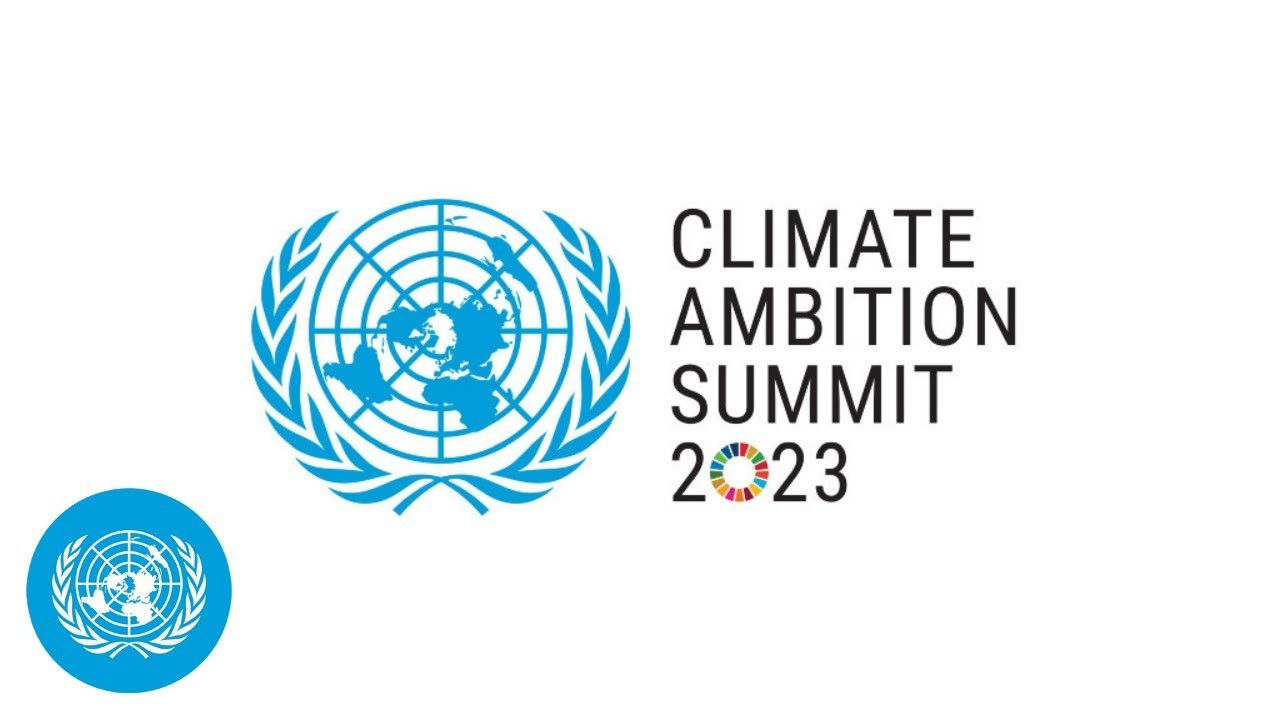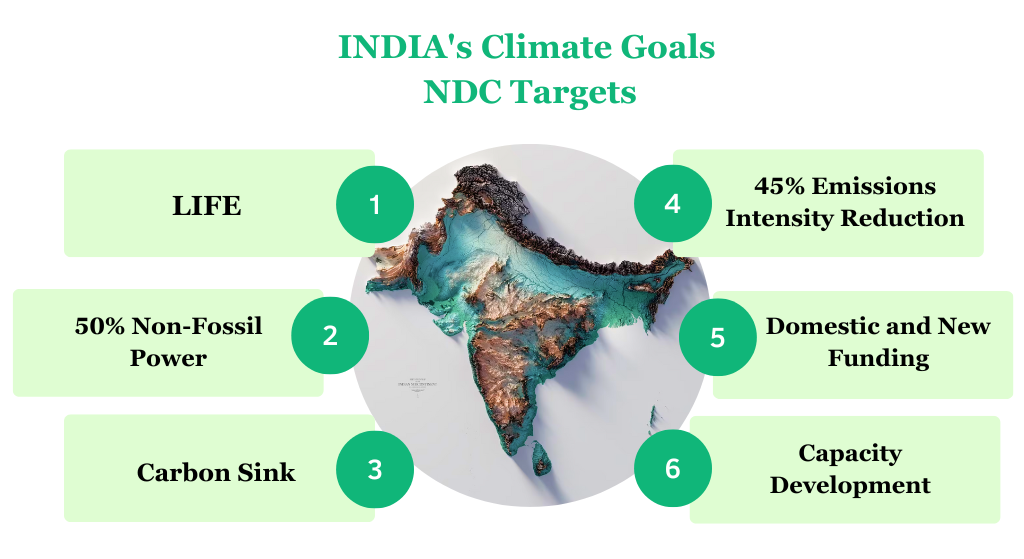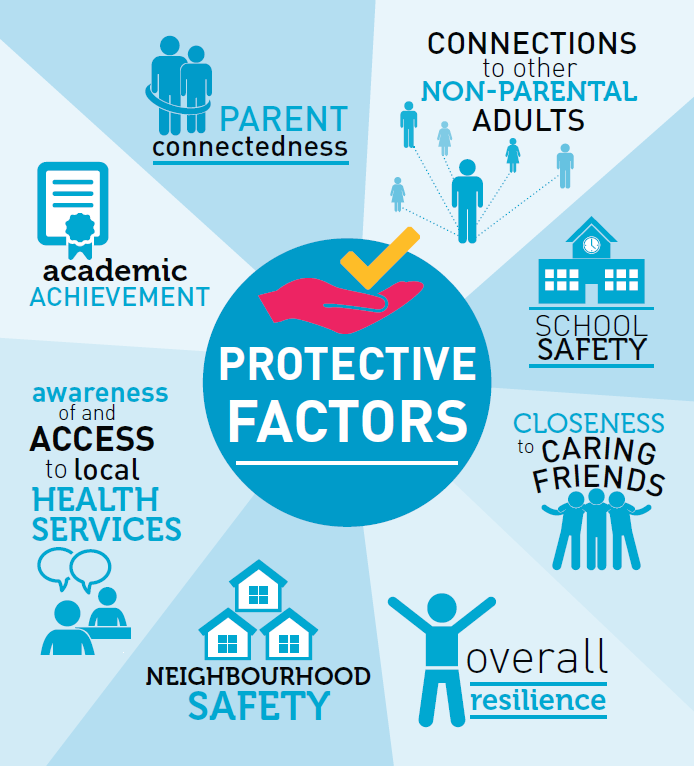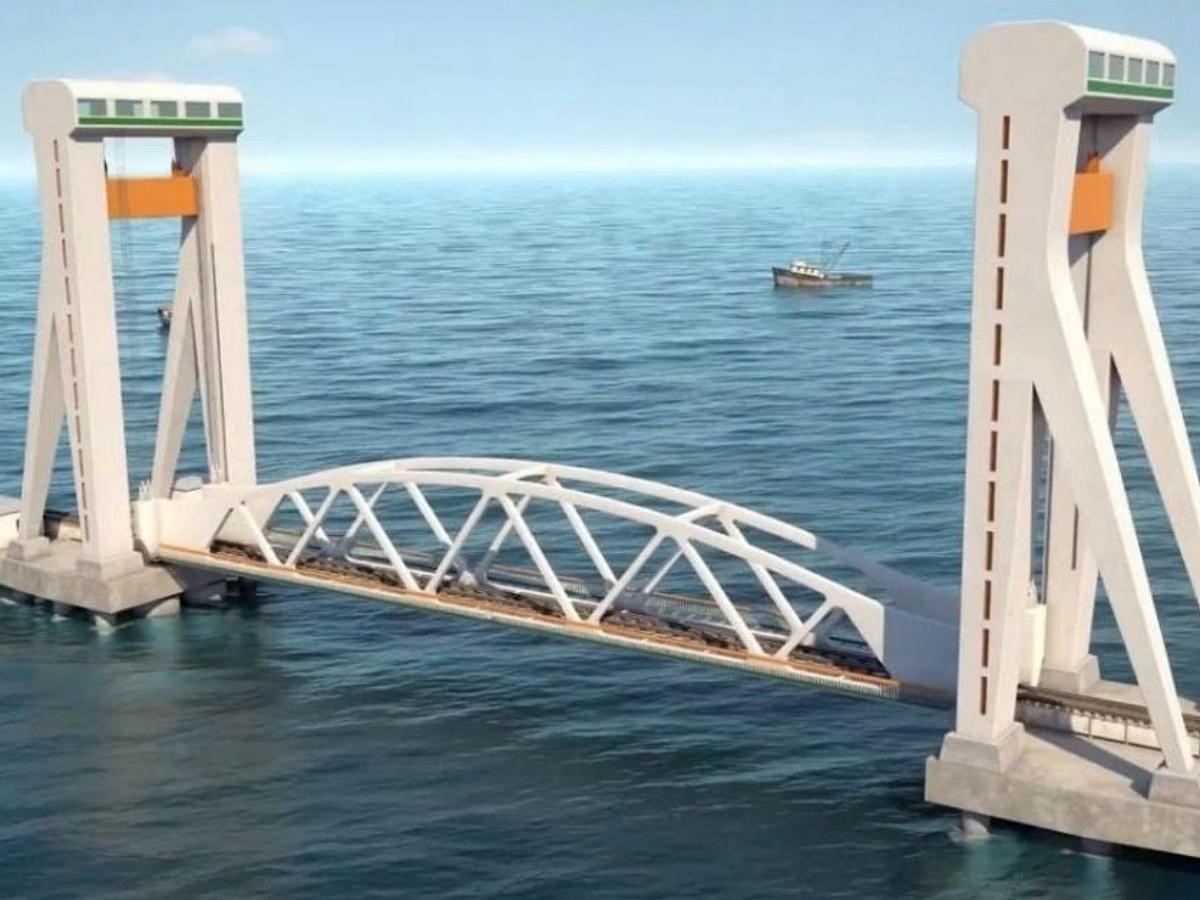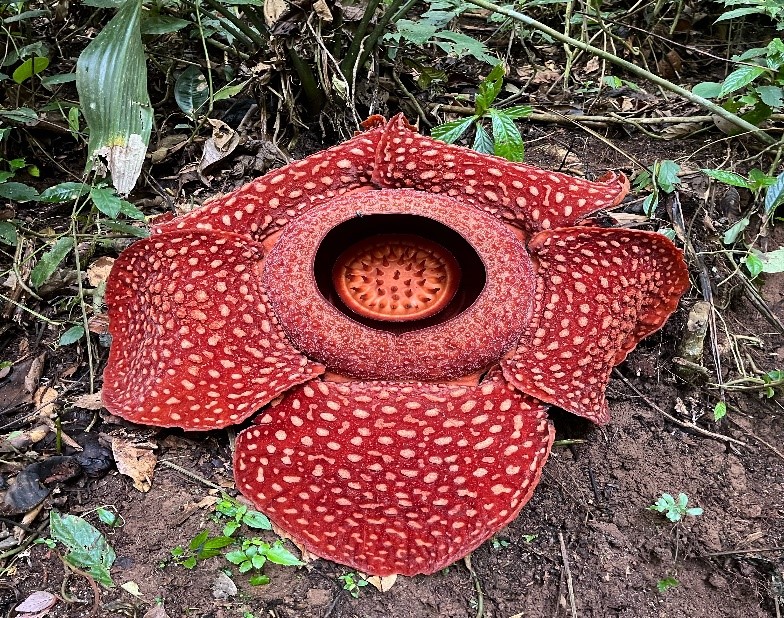- Climate Ambition Summit and Absence of USA, INDIA and CHINA
- Delimitation Commission
- Suicides as Phenomena in KOTA
- State of Working India Report, 2023
- Digital Quality of Life Index 2023
- New Pamban Bridge
- Rafflesia Flower
- New Species of Fish: Gurnard Fish
Climate Ambition Summit and Absence of USA, INDIA and CHINA
- Context:
- The Climate Ambition Summit (CAS), a pivotal event held in conjunction with the United Nations General Assembly and concluding on September 21, witnessed a significant absence of major economies whose actions greatly influence global emissions.
- Among these absentees were China, the United States, and India, the top three emitters globally, collectively responsible for approximately 42% of greenhouse gas emissions.
- Objective of the Climate Ambition Summit
- The Climate Ambition Summit served as a platform to expedite actions taken by governments, businesses, financial institutions, local authorities, and civil society.
- This event, convened by the United Nations Secretary-General on September 20, 2023, at the United Nations Headquarters in New York, represented a crucial political milestone.
- It demonstrated global commitment to accelerating the transition towards a more equitable, renewable-energy-based, and climate-resilient global economy.
- All the while, it remained dedicated to the 1.5°C degree target outlined in the Paris Agreement and the delivery of climate justice to those most affected by the climate crisis.
- Participation Criteria and Limited Speakers
- Leading up to the summit, approximately 100 heads of state had called for increased action to combat the climate crisis.
- However, when the summit day arrived, only representatives from 34 countries and 7 institutions were granted speaking slots.
- The criteria for countries to secure a speaking slot at the summit included various commitments such as updated pre-2030 Nationally Determined Contributions, net-zero targets, energy transition plans devoid of new coal, oil, and gas projects, fossil fuel phase-out strategies, more ambitious renewable energy objectives, pledges to the Green Climate Fund, and comprehensive national plans for adaptation and resilience.
- India’s Climate Commitments
- India, among the participating nations, made notable climate commitments.
- In 2022, the country pledged to reduce emissions intensity, measured as emissions per unit of gross domestic product (GDP), by 45% from 2005 levels by 2030.
- This represented a 10% increase compared to its 2015 commitment.
- India also committed to sourcing 50% of its electric power from renewable, non-fossil fuel sources, an increase from the 40% commitment made under the Paris Agreement.
- Furthermore, India promised to establish an additional carbon sink of 2.5 to 3 billion tonnes of CO2-equivalent [GtCO2e] through the expansion of forest and tree cover by 2030.
- In 2021, Prime Minister Narendra Modi declared India’s aspiration to achieve net-zero emissions by 2070.
Assessment of India’s Commitments
- Scientific assessments indicate that India’s commitments, along with similar commitments from G-20 economies, fall short of what is required to limit global temperature rise to below 2°C by the end of the century.
However, it’s worth noting that India’s low per capita emissions and its relatively minor contribution to the carbon already in the atmosphere have led some analysts to argue that India has committed to doing “more than its fair share” to meet the limits agreed upon in the Paris Agreement.
Delimitation Commission
Context:
The Nari Shakti Vandan Adhiniyam, also known as the Constitution (One Hundred and Twenty-Sixth Amendment) Bill of 2023, has gained approval from the Lok Sabha. This bill proposes a 33% reservation for women in both Lok Sabha and state Assemblies.
Reservation Provision Contingencies
- This reservation provision, however, is not immediate and hinges on two processes: a delimitation exercise and a Census.
- The 2021 Census will serve as the foundation for this exercise, which will lead to an alteration and redefinition of constituency boundaries.
- Subsequently, in the expanded constituencies, 33% of seats will be reserved for women in the upcoming elections.
Understanding Delimitation
- Delimitation is a process that involves reconfiguring a country’s territorial constituencies to align with changes in population.
- In India, this can result in changes to the allocation of Lok Sabha seats among states and the total number of seats in a state’s Legislative Assembly.
- The authority responsible for conducting this exercise is the Delimitation Commission, or Boundary Commission, which has been constituted four times in India’s history: in 1952, 1963, 1973, and 2002.
- Notably, there were no delimitations after the Censuses of 1981, 1991, and 2001.
Delimitation Commission’s Objectives
The Delimitation Commission is tasked with three main objectives:
- ensuring a fair division of geographical areas,
- maintaining equal population representation in each seat, and
- upholding the principle of “One Vote One Value.”
Legal Framework for Delimitation The process of delimitation is governed by Article 82 of the constitution, which mandates the enactment of a Delimitation Act by Parliament following each Census.
Once the Act is enacted, the Union government establishes the Delimitation Commission.
This Commission’s primary role is to determine the number and boundaries of constituencies in a way that achieves roughly equal population representation in all seats, as well as identifying seats reserved for Scheduled Castes and Scheduled Tribes.
Under Article 170, states are also divided into territorial constituencies as per the Delimitation Act after each Census. |
Challenges and Infrequency of Delimitation
- Delimitation has been infrequent in India due to various factors.
- These include the Constitutional Ratio Principle, which aims for consistent Lok Sabha seats per population ratio across states, the fear of disproportionate representation, and amendments postponing delimitation.
- These amendments were made to address concerns about the political consequences of varying population growth rates among states.
Issues and Concerns
There are also issues associated with delimitation, such as population control discrepancies, inconsistencies in delimitation based on Census data, and a constitutional cap on parliamentary seats, potentially leading to underrepresentation.
Implications of Proposed Delimitation
Furthermore, the proposed delimitation raises concerns about the representation of states based on their economic contributions and the potential for regional imbalances in representation.
Way Forward
- Looking ahead, various alternatives have been proposed to address these challenges.
- These include freezing delimitation until states achieve population stabilization, developing mathematical models for seat apportionment, ensuring representation without penalizing states for population stabilization, focusing on population control, and considering diverse characteristics in representation.
- Increasing Parliamentary Seats
- Additionally, there is a suggestion to increase the number of Parliament seats in India to reduce the significant population-to-representative ratio compared to other countries.
For instance, a seat in the UK Parliament represents 44,000 citizens, while seats in Indonesia and Brazil account for 366,000 and 341,000 citizens, respectively.
Suicides as Phenomena in KOTA
Context:
- In recent days, Kota, Rajasthan, has been thrust into the spotlight due to a distressing surge in suicides among teenagers striving to excel in various entrance exams.
- This tragic trend has been a persistent issue in Kota for over a decade, with more than 100 young lives lost in the past 10 years.
- As of September 20, 2023, Kota has witnessed a disturbing escalation in these numbers, with 25 student suicides reported.
- The National Crime Records Bureau (NCRB) reported in 2020 that, on average, a student took their own life every 42 minutes, totaling 34 student suicides per day—a deeply concerning statistic.
Suicide is a complex issue influenced by a multitude of factors, encompassing biological, socioemotional, cultural, political, and social justice-related aspects.
Among young individuals, these factors may manifest as developmental disparities, unrealistic familial expectations, the unrelenting pressure of the educational system, and the marginalization experienced by some due to factors such as race, religion, or socioeconomic background. |
Several key elements contribute to these distressing suicides:
- Academic and Performance Pressure: Students in Kota grapple with demanding schedules, fierce competition, unrelenting parental expectations, and homesickness.
- Peer Pressure and Parental Expectations: The intense competition and the high bar set by parents, teachers, and society as a whole result in substantial psychological stress and mental distress.
- Lack of Social Support: Separated from their families and friends, students often find themselves without a support system during times of distress and self-doubt. There’s a dearth of mechanisms to acknowledge and address individual differences or provide safe spaces for students to share and support one another.
- Lack of Mental Health Support: Educational institutions in Kota generally lack sufficient mental health support and counseling services. Even when available, these resources are underutilized.
- Social Stigma: Feelings of failure, guilt, and helplessness can become overwhelming, pushing some individuals to a point of no return.
- Commercialization and Commodification of Education: The coaching industry in Kota has transformed into a lucrative business, often prioritizing profit over the well-being of students.
- Rising Lower Middle-Class Aspirations: The emphasis on securing admission to top colleges often overshadows students’ passions and interests.
To address this grave issue, various mental health initiatives have been introduced:
- National Mental Health Programme (NMHP) and District Mental Health Programme (DMHP): These programs aim to address the burden of mental disorders and the shortage of qualified professionals in the field of mental health.
- Mental Healthcare Act, 2017: This act was enacted to provide mental healthcare and services for individuals with mental illness, ensuring their rights are upheld during treatment.
- Manodarpan Initiative: Launched by the Ministry of Education, this initiative provides psychological support to students for their mental health and well-being, especially during the COVID-19 pandemic.
In response to the crisis in Kota, the Rajasthan government has taken steps to mitigate student suicides, including:
- Half-Day Study, Half-Day Fun: Institutes in Kota have been encouraged to dedicate Wednesdays to activities other than routine tests, offering students a break.
- Identification of Students with Suicidal Tendencies: A daily form has been introduced for coaching students to assess their mental well-being.
- Psychological Counseling: Students who miss routine tests or perform poorly are identified and provided with psychological counseling.
- Reducing Course Burden: Coaching institutes have formed committees of subject experts to alleviate the academic burden on students.
- Motivational Sessions: Institutes are conducting online motivational sessions, led by experts and shared on social media, to benefit all students.
However, ethical issues surrounding the coaching industry persist:
- Coaching Industry: Profit Maximization vs. Student Welfare: Balancing the need for revenue in educational institutions with the well-being of students remains a challenge. High tuition fees can exclude deserving students from accessing quality education.
- Right to Education vs. Right to Well-Being: While preparing for competitive exams in Kota is a luxury for many, it can also feel like being in a “pressure cooker.”
- Parental Pressure vs. Child’s Autonomy: The aspirations of parents for their children must be balanced with the child’s well-being.
Success in this environment often seems like the only option for students, especially those from middle or low-income backgrounds. Media also plays a role by highlighting success stories of toppers, creating unrealistic expectations and increasing pressure on students.
The tension between meritocracy and equality of opportunity is another challenge. Merit-based systems promote competition and innovation, while equality of opportunity aims for social mobility, reduced discrimination, and fair access for all students.
Causes of Student Suicides in UPSC Examinations:
- Excessive Emphasis on Achievement: Aspirants often experience excessive pressure, believing that their worth is solely defined by their exam performance.
- Fierce Competition: The intense rivalry among candidates compels them to strive for superiority, resulting in extreme stress levels.
- Financial Burden: Numerous aspirants’ resort to taking on heavy study loans, while some may even liquidate their assets due to the protracted nature of the examination process, leading to mounting financial stress.
4.Unrealistic Expectations: Misinformation or insufficient guidance can lead to disillusionment and a sense of relative deprivation among aspirants, exacerbating their challenges.
Moving forward, several measures can help address these issues:
- Imparting Value Education: Education should prioritize character building, aligning with the vision of leaders like Swami Vivekanand. It should not be solely about high-paying jobs but should liberate individuals from societal constraints.
- Corporate Ethics in the Coaching Industry: Balancing profit maximization with student welfare through scholarship and financial aid programs, along with the involvement of non-profit organizations, is essential.
- Role of Family, Friends, and Teachers: Parents should be prepared to support their children if they are unable to cope with the pressures of coaching.
- Government Initiatives: Regulation of the coaching industry, preventing fraudulent claims, offering scholarships to needy students, and ensuring universal education are vital steps to combat increasing mental distress among students.
- Imparting Value-Based Education: Teaching ethical values can help students make rational decisions and broaden their thinking beyond immediate goals.
Stakeholder Engagement: Involving various stakeholders, including students, educators, and policymakers, in collaborative strategies can help prevent student suicides.
State of Working India Report, 2023
The “State of Working India 2023” report was recently published by the Centre for Sustainable Employment at Azim Premji University. The report presents several important findings regarding employment trends in India.
Key takeaways:
- Economic Mobility by Family Background (2004-2018):
- Between 2004 and 2018, there has been a noticeable increase in economic mobility among sons whose fathers were engaged in casual wage employment.
- However, this upward mobility has been less pronounced for Scheduled Caste (SC) workers compared to those from the general caste.
- The presence of unemployed mothers-in-law in the same household significantly reduces the likelihood of married women being employed. Conversely, households with employed mothers-in-law have a smaller impact on women’s employment.
- Data Sources:
- The report relies on data from various sources, including the National Statistical Office, such as Employment-Unemployment Surveys and Periodic Labour Force Surveys, to uncover critical labor market trends in India.
- Caste-Based Employment Trends (1983-2021):
- Between 1983 and 2021, the proportion of regular wage workers from the Scheduled Caste (SC) category has increased but remains lower than that of the general caste (“Others”).
- In 2021, 32% of general caste workers were in regular wage employment compared to 22% of SC workers.
- General caste workers also have higher rates of self-employment compared to SC workers.
- Larger enterprises tend to over-represent general castes to a greater extent.
- Economic Mobility by Caste (2004-2018):
- In 2018, sons of SC/ST casual wage-working fathers showed a decrease in staying in casual wage work (75.6%), compared to 2004 (86.5%).
- A steeper decline is observed for sons of general caste casual wage-working fathers, dropping to 53% in 2018 from 83.2% in 2004. This indicates more significant economic intergenerational mobility for general caste casual wage workers compared to SC/STs.
- Sons of casual wage workers, in general, have shifted from casual wage work to informal, semi-formal, and formal regular wage employment between 2004 and 2018.
- Representation of Women and SCs in Industries (1983-2021):
- Between 1983 and 2021, there has been an increase in women’s representation in industries like tobacco, education, health and social work, and textiles.
- However, women continue to be over-represented in these sectors compared to men.
- The degree of SC representation in industries like waste management & sewerage and leather & leather products has declined, although SCs still tend to be over-represented in certain industries compared to other castes.
- Relationship Between Husband’s Earnings and Women’s Employment:
- The “male breadwinner” norm is evident, as an increase in the husband’s income tends to reduce the probability of the wife being employed.
- In rural areas, this decline in probability slows down as the husband’s income increases.
- In urban areas, there is a U-shaped pattern, with a decrease in the probability of the wife being employed up to an earnings threshold of Rs. 40,000, followed by an increase.
- This pattern is influenced by better-educated wives in higher income brackets who have access to better-paid work.
- Female Workforce Participation by Education (2021-22):
- In rural areas, women have higher workforce participation rates for all levels of education compared to urban areas.
- Urban women’s workforce participation rates follow a U-shaped trend as education levels increase, indicating higher wages and employment opportunities attracting them to the workforce.
- However, the demand for such jobs is high, while the supply struggles to keep up.
- Shift in Non-Agricultural Employment (1980s-2021):
- Since the 1980s, the share of workers in non-agricultural sectors has significantly increased, reaching 19.8% in 2021.
- This figure briefly peaked at 20.3% in the late 2010s before declining.
- Workers leaving agriculture have mostly taken up casual wage labor or informal regular wage work in construction or services, as the organized and salaried sectors have shown stagnant growth.
- 9. Unemployment Among Educated Youth:
- Graduates under 25 years old have the highest unemployment rate among all education levels within the same age group.
- The unemployment rate decreases as education level decreases.
- As individuals grow older, the probability of employment increases, primarily because unemployment becomes unsustainable.
However, even with a lower unemployment rate compared to pre-pandemic levels, over 15% of graduates remain unemployed.
Digital Quality of Life Index 2023
India’s Ranking Improvement
In the Digital Quality of Life Index survey, India has secured the 52nd position out of 121 countries, marking a significant leap from its previous rank of 59th.
Assessing Five Key Factors The survey, conducted by a Netherlands-based organization, evaluates countries based on five crucial factors: 1. internet quality, 2. internet affordability, 3. e-infrastructure, 4. e-government, and 5. e-security. |
Internet Quality Leading the Way
India’s remarkable jump in the rankings can be primarily attributed to substantial improvements in internet quality, where it now holds the 16th position globally.
Mixed Results in Key Areas
While India excels in internet quality, it ranks 91st in e-infrastructure, 28th in internet affordability, 25th in e-governance, and 66th in e-security.
Global Leaders in Internet Speed
- Singapore and Saudi Arabia have secured the top spots for average internet speed, boasting impressive speeds of 300 Mbps and 310 Mbps, respectively.
Steady Internet with Notable Gains
- Despite not having the fastest internet speeds, India is known for its internet stability.
- The country has witnessed a remarkable 297% increase in mobile internet speeds, largely attributed to the widespread rollout of 5G technology.
- Fixed broadband speeds have also grown by 16%.
Affordable Internet Access
- India stands out for its internet affordability.
- To afford a fixed broadband line, individuals in India need to work for approximately 1 hour and 48 minutes per month, while access to mobile internet costs them approximately 44 minutes and 22 seconds of work.
New Pamban Bridge
Key Points:
- Currently, a railway sea bridge is in the process of being constructed in Tamil Nadu, India.
- This bridge serves as a vital link between Mandapam town on the mainland and Rameswaram on Pamban Island.
- Construction of this bridge was initiated in 2019 but encountered delays, missing the previously set deadlines in March and July.
- The bridge comprises 99 horizontal spans, with 73 of these spans already in place.
- Among these spans, one measures 72.5 meters and functions as a “lift-span” designed to accommodate passing ships.
- The remaining 26 spans still need to be erected to complete the project.
- Rail Vikas Nigam Limited is responsible for executing this project, which is allocated a budget of ₹545 crore.
The new Pamban railway sea bridge, spanning 2.05 kilometers, is intended to replace the aged Pamban bridge, which has served its purpose for more than a century.
Rafflesia Flower
Description:
- The Rafflesia Flower belongs to a genus of parasitic flowering plants originating from Southeast Asia.
- These plants are renowned for producing the world’s largest individual flowers, both in terms of size and weight.
- Also Referred to as: They are commonly known as “Corpse flowers” due to their unpleasant odor.
- Habitat: Rafflesia Flowers are typically found in the tropical rainforests of Sumatra, Java, Borneo, Peninsular Malaysia, southern Thailand, and the Philippines.
- Varieties: There are 42 recognized species of Rafflesia, with the most well-known being Rafflesia arnoldii.
- Characteristics: These flowers can attain remarkable sizes, reaching up to nearly 1 meter (approximately 3 feet) in diameter and weighing as much as 7 kg.
- Parasitic Nature: Unlike traditional plants, they lack leaves, stems, or roots.
- They rely on a host vine known as Tetrastigma for sustenance and structural support.
- Brief Blooming Period: Rafflesia Flowers have a relatively short blooming period, often lasting only a few days to a week.
Conservation Status: They are classified as Critically Endangered according to the IUCN.

